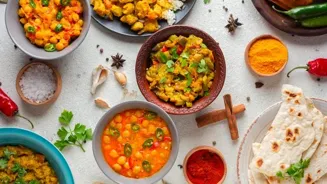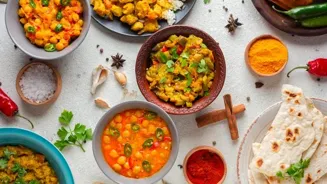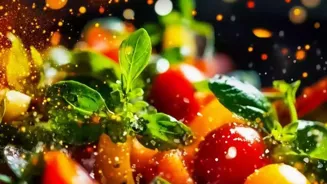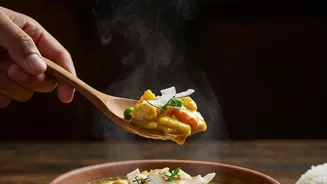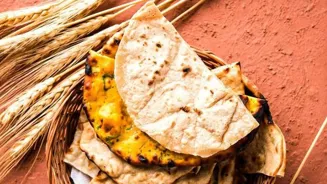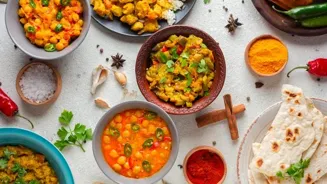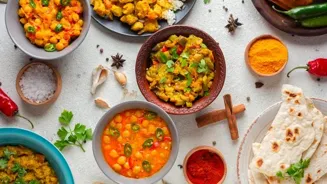Discover the rich tapestry of Indian cuisine beyond butter chicken & naan. Explore surprising facts unveiling its diverse flavors, spices, vegetarian delights, and sweet treats. Prepare for a culinary
journey of discovery! Read on to delve deeper into the fascinating world of Indian food
India, a land of vibrant colours, diverse cultures, and of course, incredibly delicious food! Indian cuisine is known globally, but there's so much more to it than just butter chicken and naan (though we love those too!).
Prepare to have your taste buds and minds blown with these 10 surprising facts about Indian food. You might think you know Indian food, but get ready for a delightful journey of culinary discovery, uncovering lesser-known aspects of this rich culinary heritage.
We're diving deep, beyond the usual suspects, to reveal some truly fascinating insights.
Regional diversity in Indian cuisine offers a vast variety of flavors and styles
First, let's talk about regional diversity. Forget thinking of 'Indian food' as one single entity. It's more like a continent of culinary styles! Every state, every region, boasts its unique ingredients, cooking techniques, and flavor profiles.
Think about it: the creamy coconut-based curries of Kerala are a world away from the spicy, rich gravies of Rajasthan. From the fermented delights of the Northeast to the delicate seafood preparations of Goa, the sheer variety is simply astounding.
Trying to explore all the different cuisines is like embarking on an endless, delicious adventure. So next time you think of 'Indian food', remember the incredible tapestry of flavors it represents.
Discover the intricate world of spices in Indian cuisine, beyond just flavor - a tradition with health benefits
Next up, the amazing world of spices! Yes, we all know Indian food uses spices, but the depth and complexity might surprise you. It’s not just about adding heat; it's about creating layers of flavour.
The combinations are carefully crafted and can vary from household to household, generation to generation. From the earthy aroma of turmeric to the warming scent of cardamom, spices are used not only for taste but also for their medicinal properties, according to Ayurveda.
Every tiny spice has great flavour and adds a different smell making the dish very special. These benefits have been used for hundreds of years.
The significance and diversity of Indian vegetarian cuisine
The role of vegetarianism is significant. India has a long history of vegetarianism, influenced by religious and philosophical beliefs. Many communities follow a strictly vegetarian diet, and the variety of vegetarian dishes is simply mind-boggling.
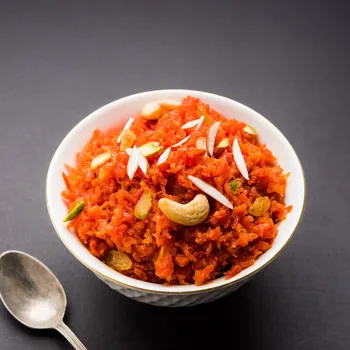
Forget bland tofu and sad salads – Indian vegetarian cuisine is bursting with flavour, using lentils, vegetables, and dairy in creative and delicious ways. From paneer butter masala to vegetable biryani, the options are endless, and prove that vegetarian food can be anything but boring.
You will be amazed at how the Indian vegetarian dish is prepared by using spices and lentils.
Milk products, especially ghee, play vital role in Indian cuisine
Milk products are very important. Dairy, especially ghee (clarified butter), plays a crucial role in Indian cooking. Ghee is considered sacred and is used in everything from sweets to savory dishes. It adds a rich, nutty flavor and is believed to have numerous health benefits according to Ayurveda.
Other dairy products like yogurt (dahi) and paneer (a fresh cheese) are also widely used. These add a creamy texture and flavour to many Indian dishes. Some sweets and dishes have milk as the main ingredient and make the dish tasty.
Variety of Indian breads, each region's specialty, loved with dishes in India
The are many different types of breads. While naan is popular globally, there's a whole universe of Indian breads to discover! From the roti (chapati) made on a tawa to the paratha stuffed with vegetables, each region has its own specialty.
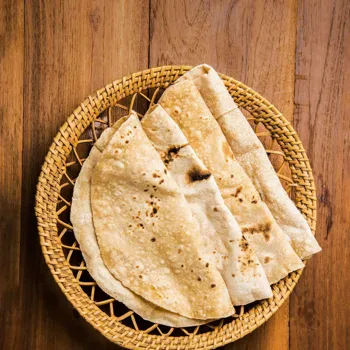
Some breads are made with different flours, some are fried, some are baked in a tandoor oven. Each bread is prepared using different making it a special breads. These breads are loved with different dishes in India. North India has most popular breads of India.
Indian sweets reflect diverse flavors and traditions
Desserts have a sweet history. Forget the usual gulab jamun; Indian sweets are incredibly diverse and reflect local ingredients and traditions. From the creamy, milk-based peda to the crispy, jalebi, each sweet has its own unique texture and flavor.
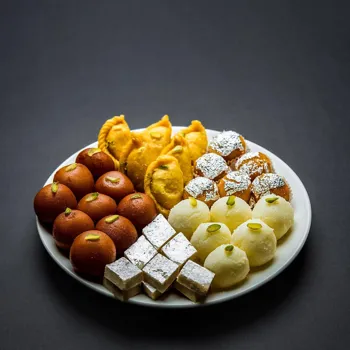
Many sweets are associated with festivals and celebrations, and are made with love and care. The dessert list includes sweets like barfi, halwa, kheer and many more. These sweets make our festivals and celebrations grand. You should try all these to taste the different flavours of India.

